50 Years of Lamborghini Countach
If you had to decide which Lamborghini sports car is the most famous in the world, you would probably fail. Murciélago, Diablo, Miura and Aventador are just as high on the list as the Countach. The latter celebrated its world premiere at the 1971 Geneva Motor Show. Originally, the car bore the internal abbreviation LP112, shortly thereafter changed to LP 500. LP stands for ‘Longitudinale Posteriore’ and refers to the installation position of the V12 engine longitudinally behind the passengers. Lamborghini used the number to indicate the engine capacity of around five liters. Rumor has it that the car got its model name when it was shown to the factory staff in Sant’Agata before the Geneva show. Another version of the story speaks of a presentation at Bertone. One of the employees slipped the expression “Countach” over his lips, which in the dialect of the Piedmont region is an exclamation of astonishment and admiration. Lamborghini itself tells the story in such a way that the car was hidden on a farm near Grugliasco near Turin before its world premiere in Geneva. When the local farmer saw the car, he exclaimed “Countach”, which Marcello Gandini also heared and adopted.
Countach was only planned as a concept car
The wedge-shaped body was actually intended merely as a finger excercise to show what Lamborghini was capable of in terms of technology and Bertone in terms of design. At the time, Marcello Gandini was working as chief designer for Nuccio Bertone. Having already designed the Miura, he now followed up with a much more radical design. While gentle curves predominated in the Miura, the LP 500 was literally like a door wedge on wheels. Due to the fact that it was intended purely as a concept car, it made its debut on March 11, 1971 at 10:00 a.m. on the Bertone stand. Lamborghini showed the Miura SV on the same day. The thesis that the model name came directly from Bertone is also supported by the fact that the production models of the sports car brand with the bull in the logo from the Miura onwards were all named after famous fighting bulls (apart from the LM002). The Countach, however, kept its name.
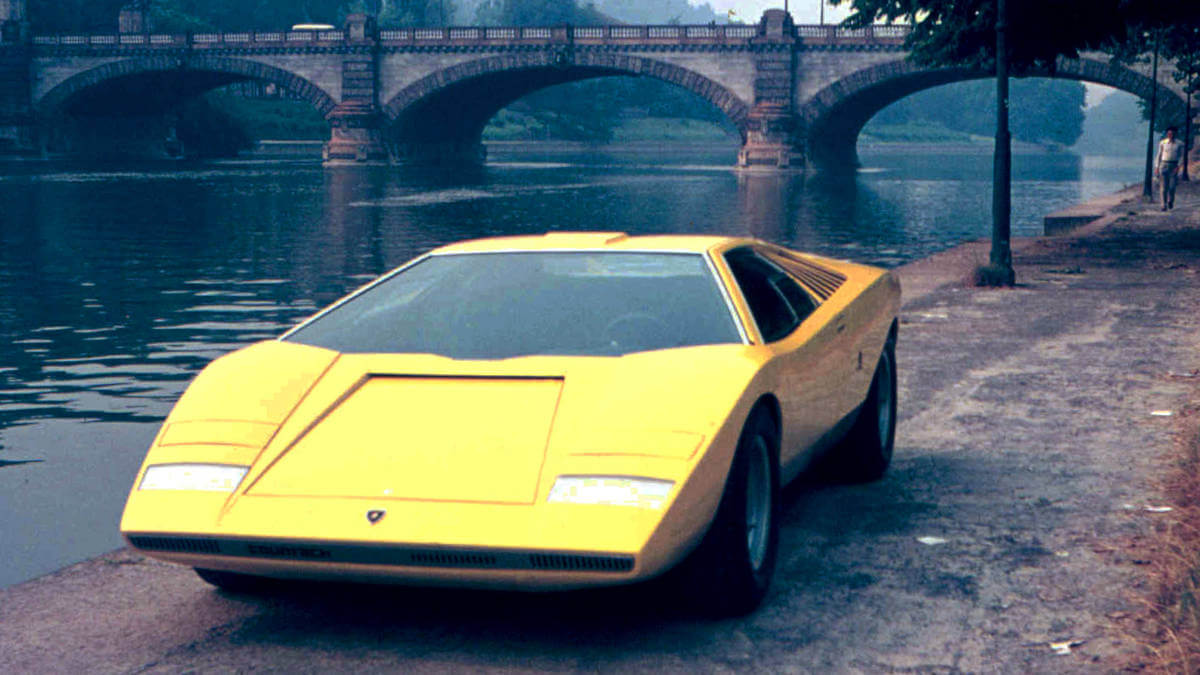



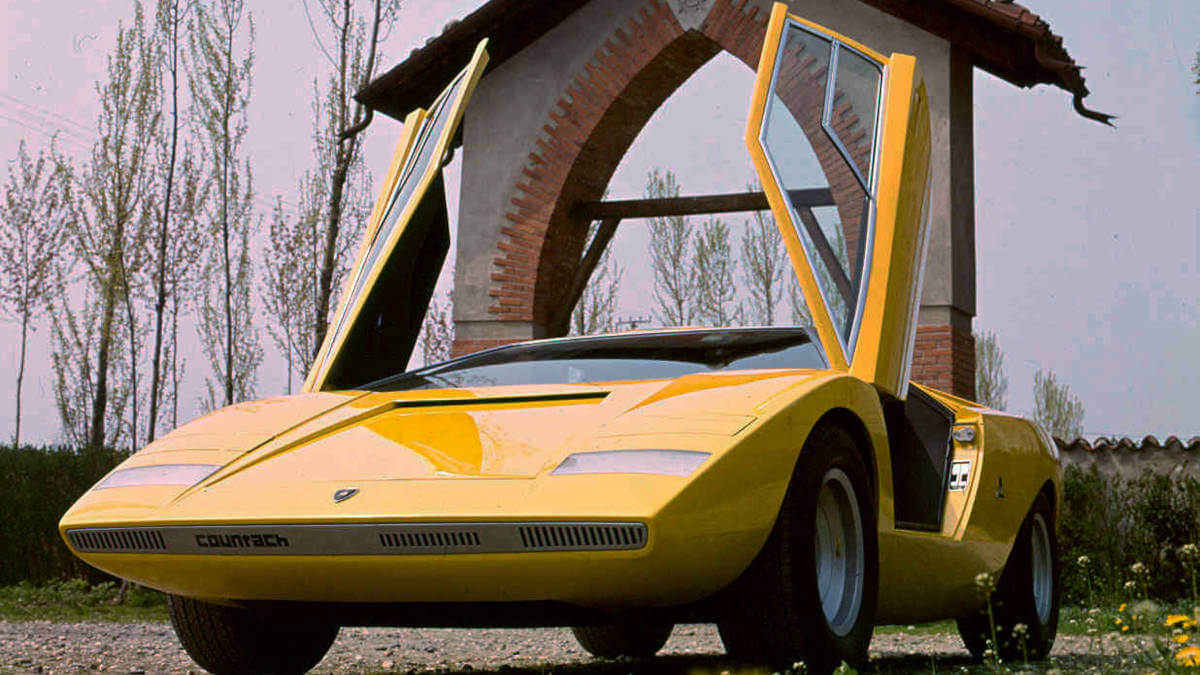



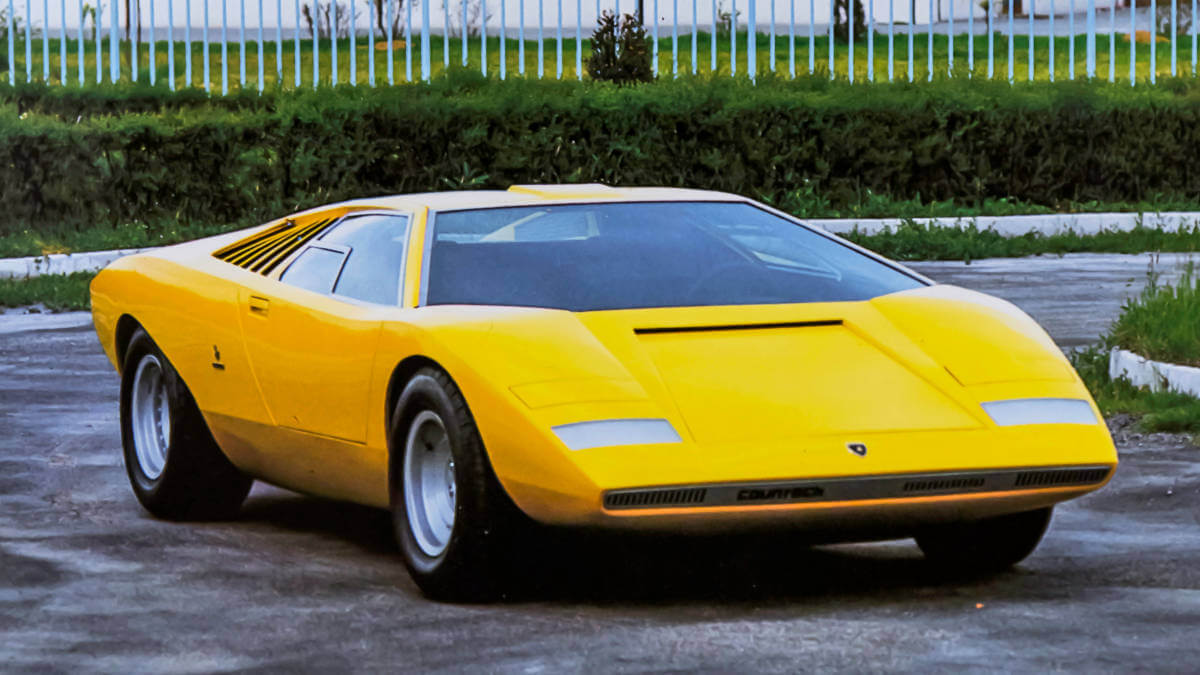



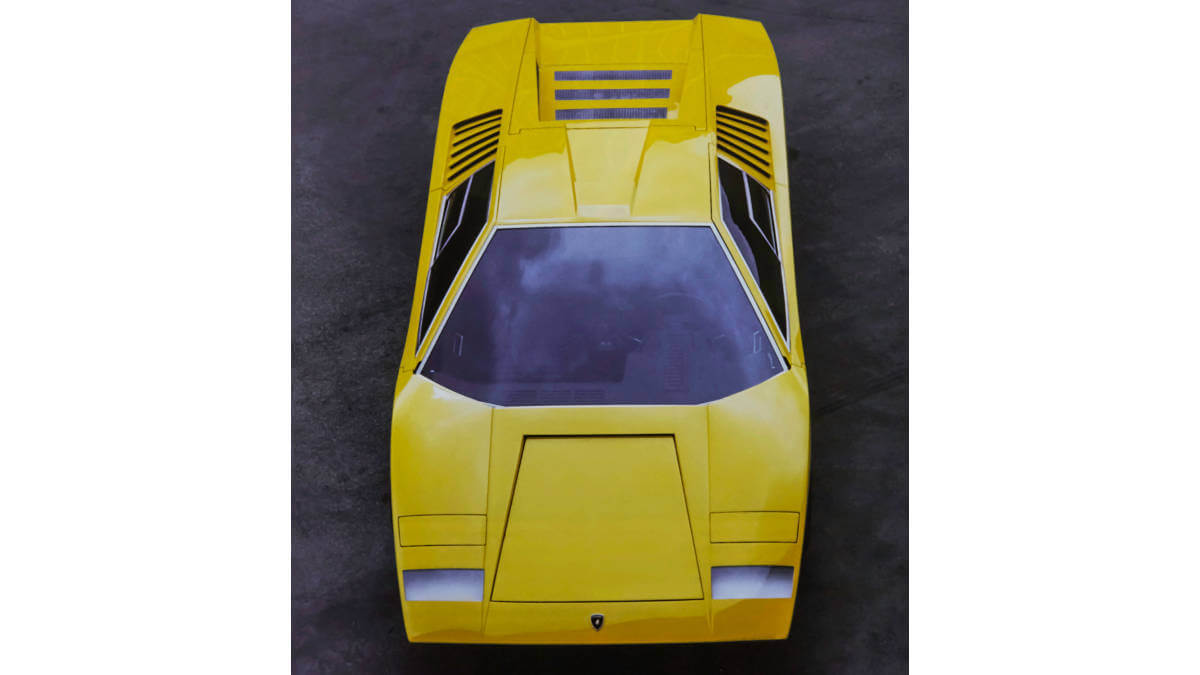



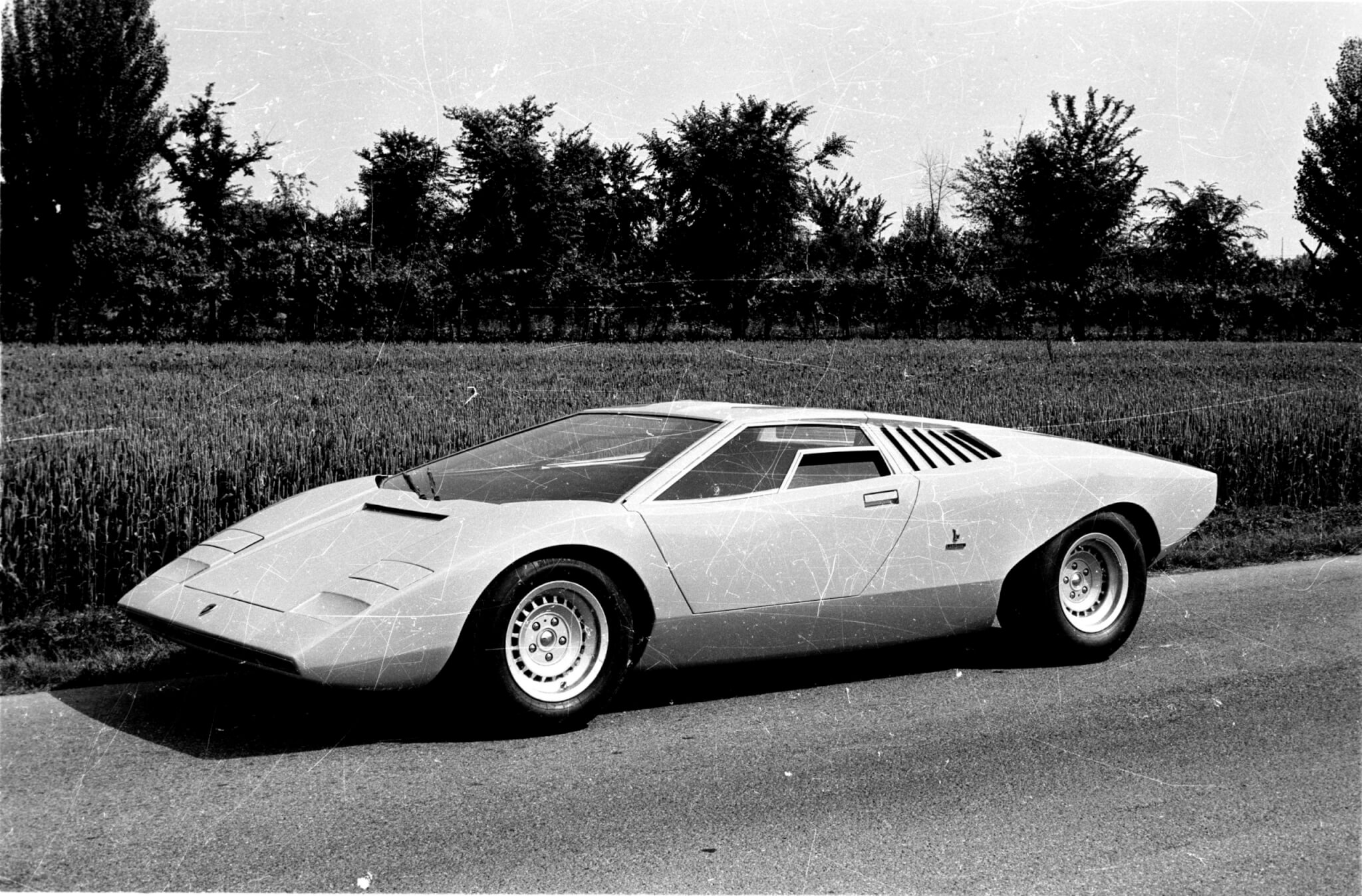



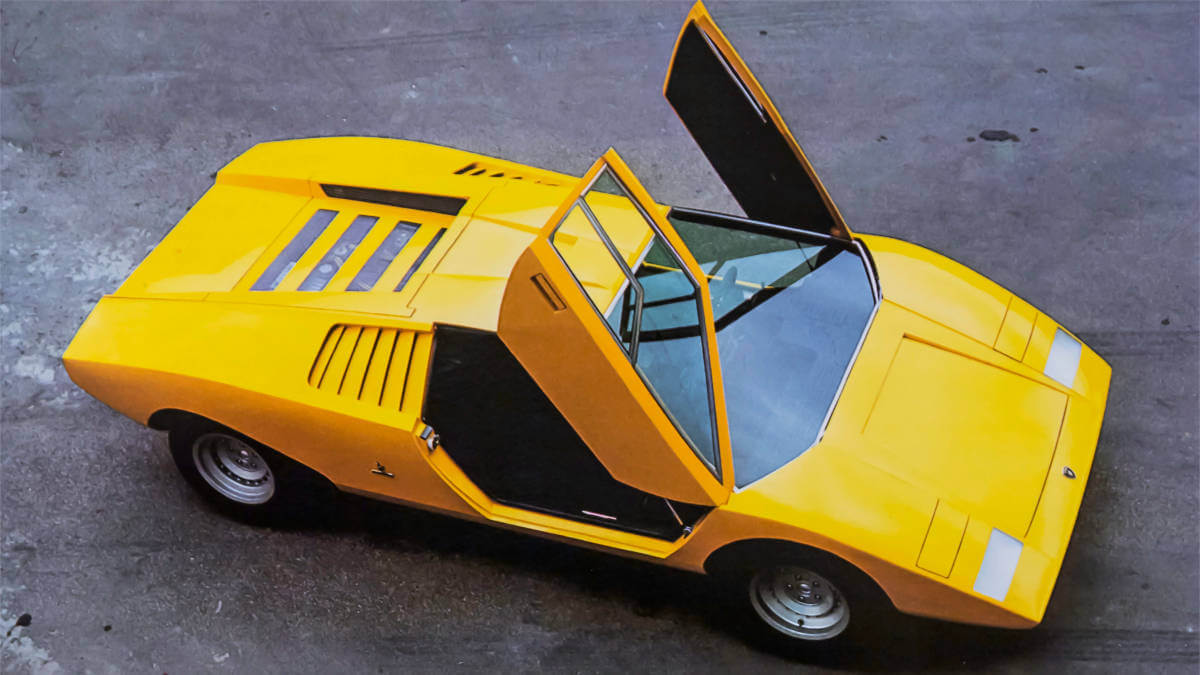



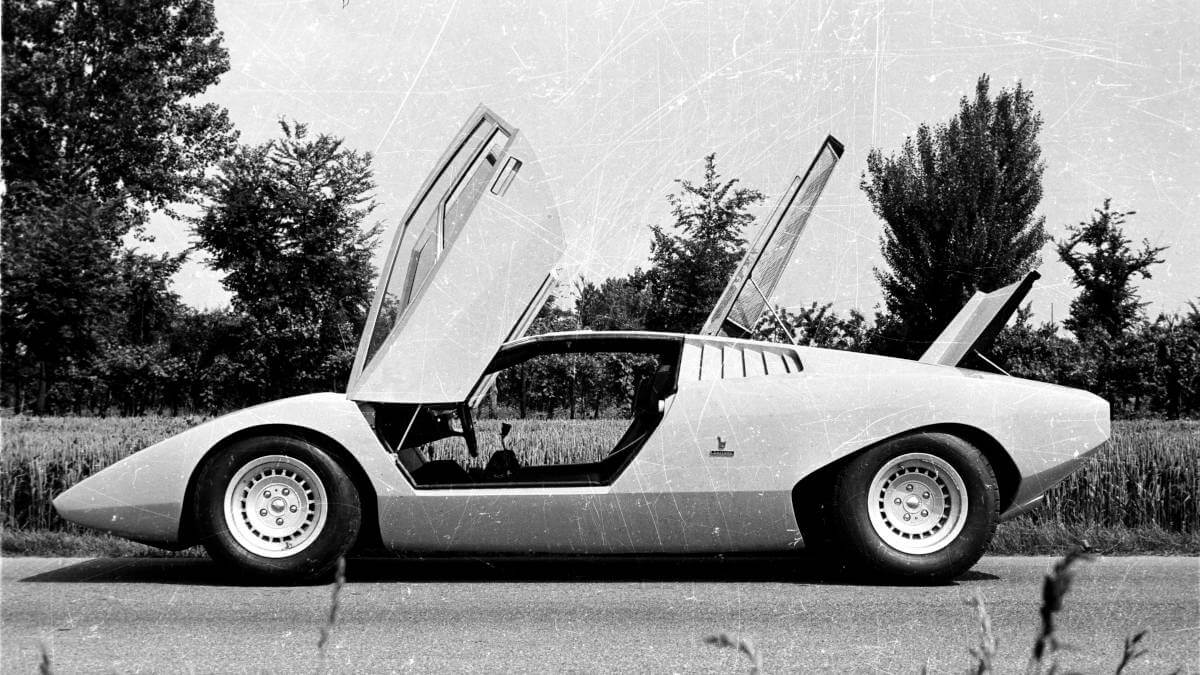



Tubular frame instead of steel platform frame
Beneath the study’s bright yellow paint was a body formed by hand from sheet steel over a platform frame also made of steel. As a special detail, Marcello Gandini integrated the scissor doors that opened upwards and forwards, first shown on his Alfa Romeo Carabo in 1968. Virtually overnight, they became the trademark of the V12 supercars from San’Agata. Already at the show, various solvent customers wanted to purchase the one-off directly or asked Bertone and Lamborghini when series production would begin. This finally led Ferruccio Lamborghini to the decision to include the Countach in the model program and thus to succeed the Miura. However, for this purpose he had his technical director and chief engineer Paolo Stanzani develop an independent lattice tube frame with a new chassis. Steel tubes with a round cross-section were assembled by Marchesi in Modena and then delivered to Lamborghini. There, the body panels of the production cars, riveted to the frame, were made of aluminium.
Production version debuted in Geneva in 1973
Numerous test drives took place with the roadworthy LP 500 concept car after the Geneva show. These prompted Ferruccio to redevelop the chassis as described above. Secondly, he had the cooling air openings of the body optimized and the V12 engine developed ready for series production. It was based on that of the Miura. For the production version of the Countach, the displacement was reduced from five to four liters to increase reliability. This also reduced the power output from 328 kW/446 hp in the study to 276 kW/375 hp. This power was transmitted to the rear wheels via a manual five-speed gearbox. For this purpose, the shaft from the engine to the differential ran across the oil pan. After the decision was made to go into series production, the Countach LP 400 was on display at the Geneva Motor Show in March 1973. This time as a green-painted prototype on Lamborghini’s regular stand. As with the LP 500, there was a small window in the roof for the interior mirror. This earned the model the nickname “Periscopio”.
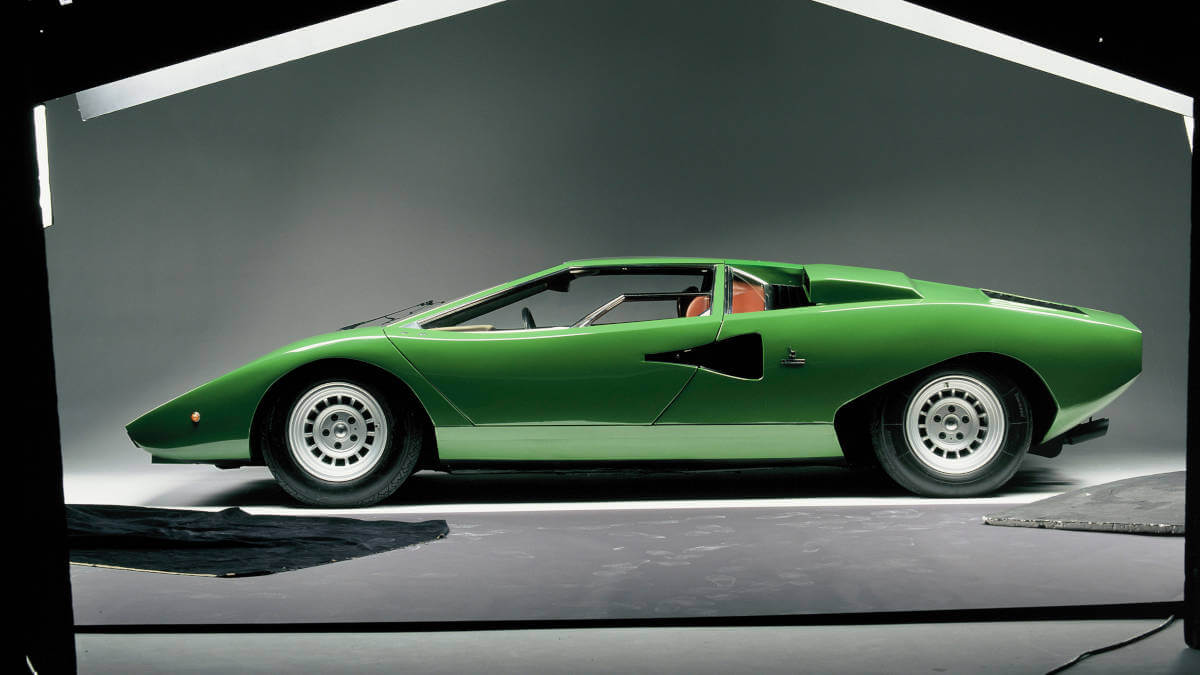



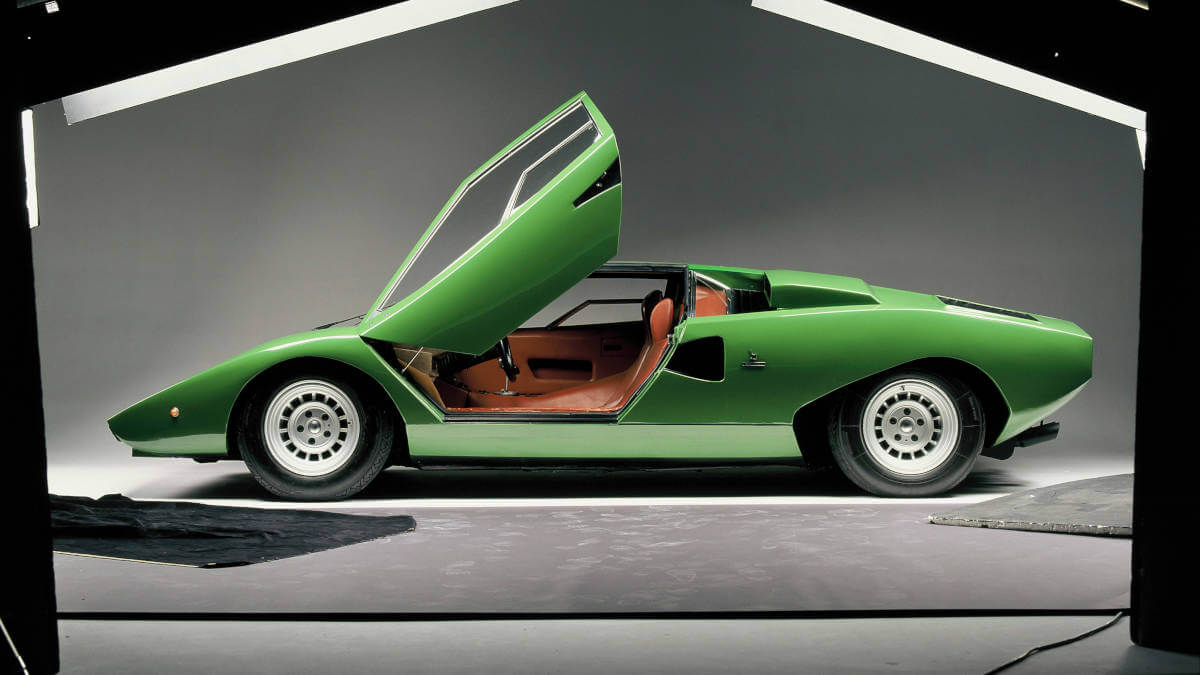



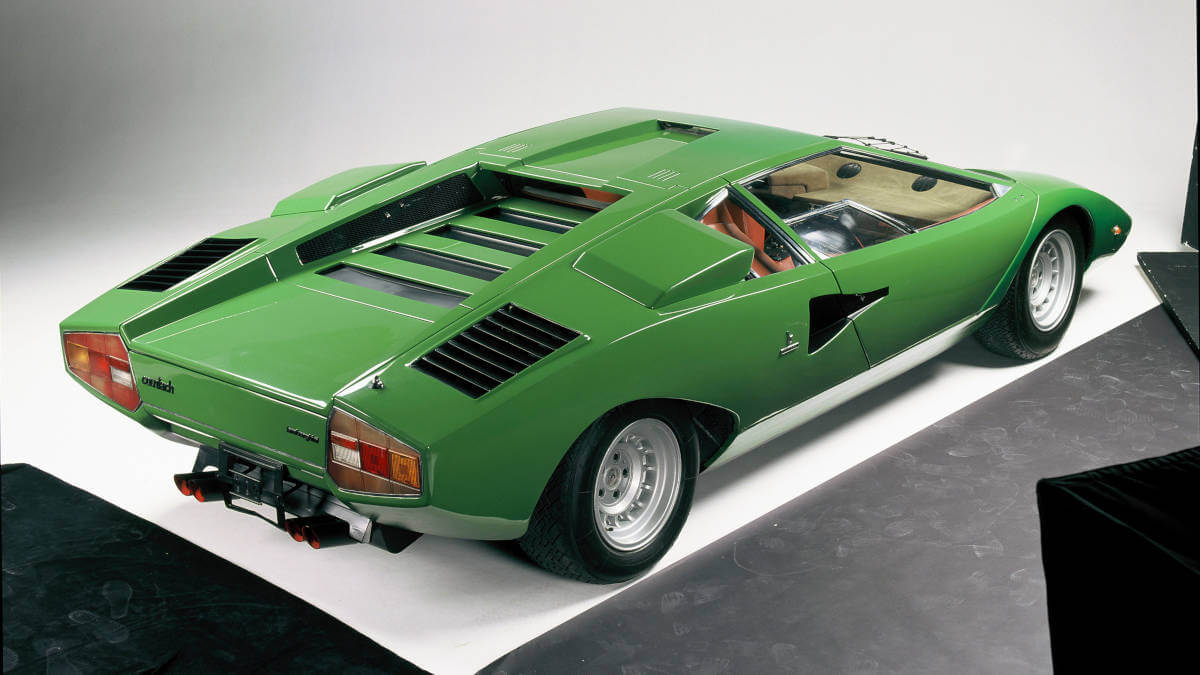



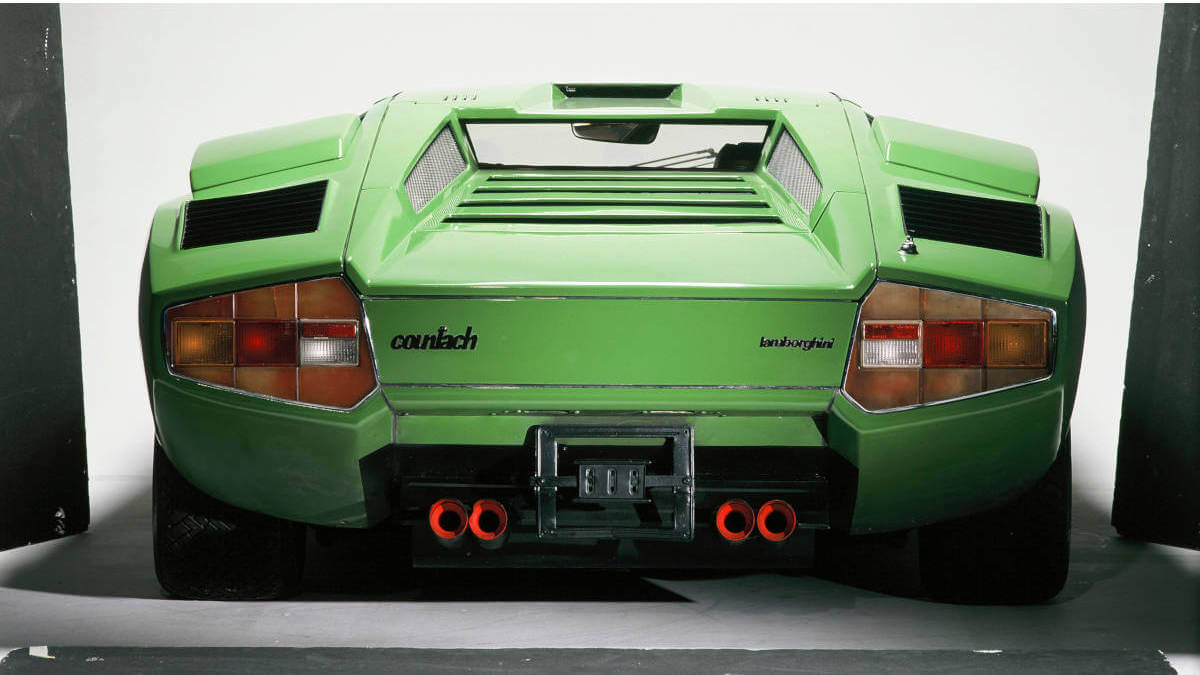



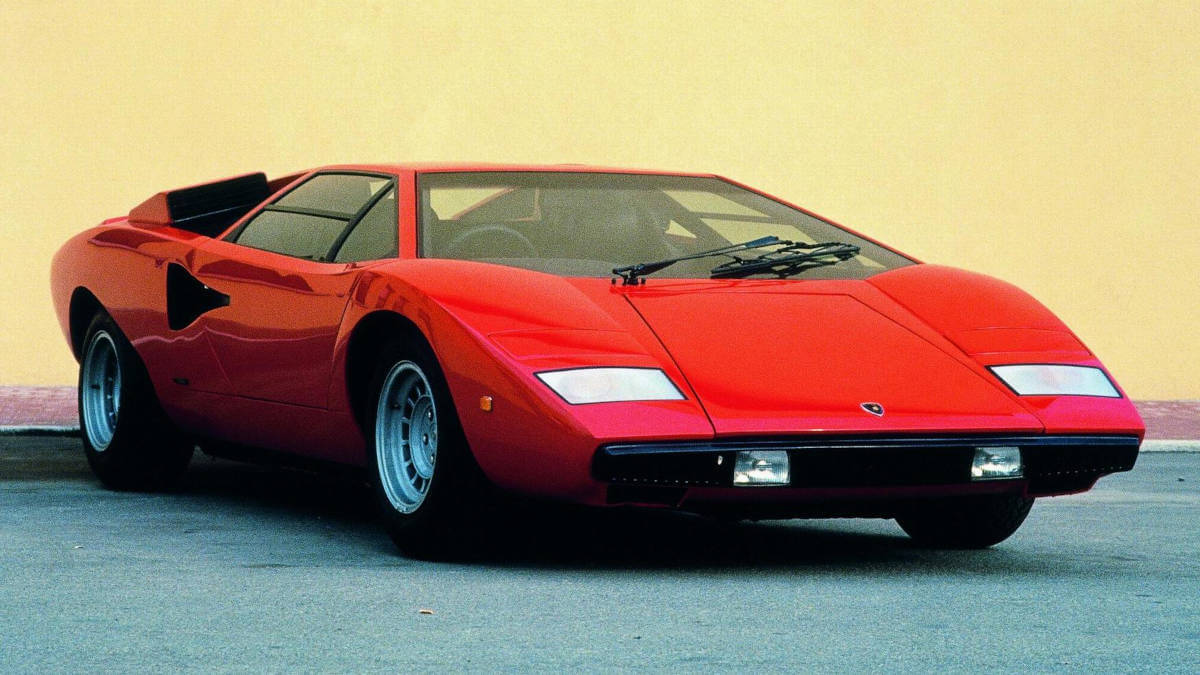



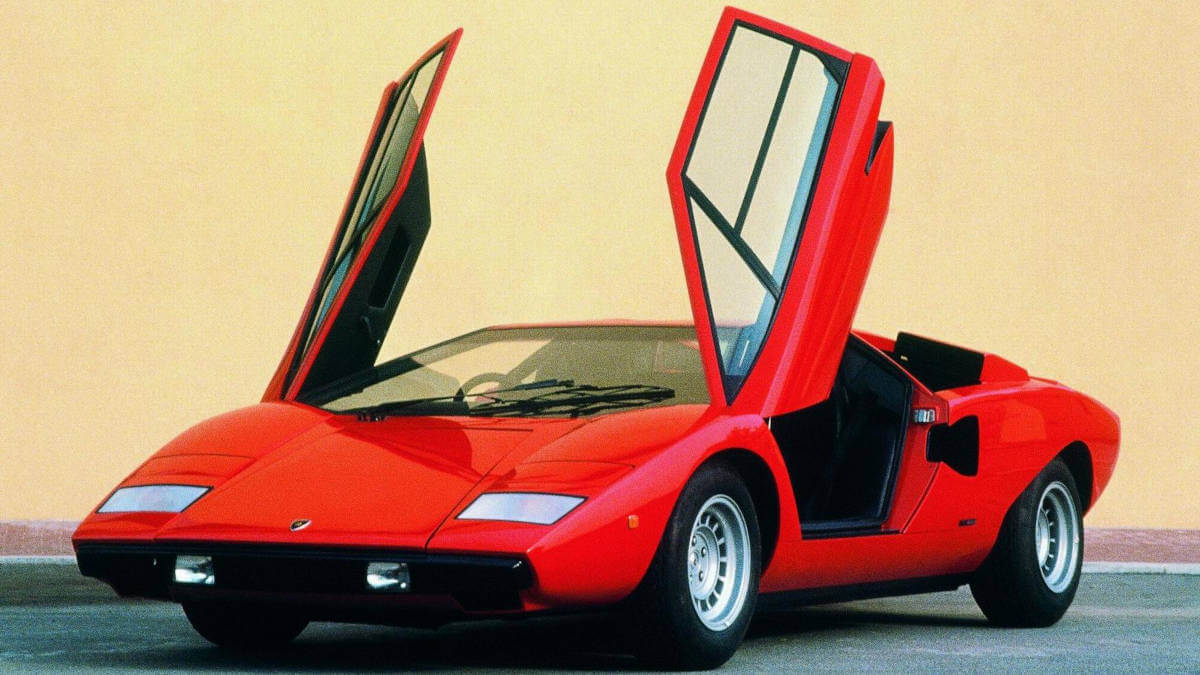



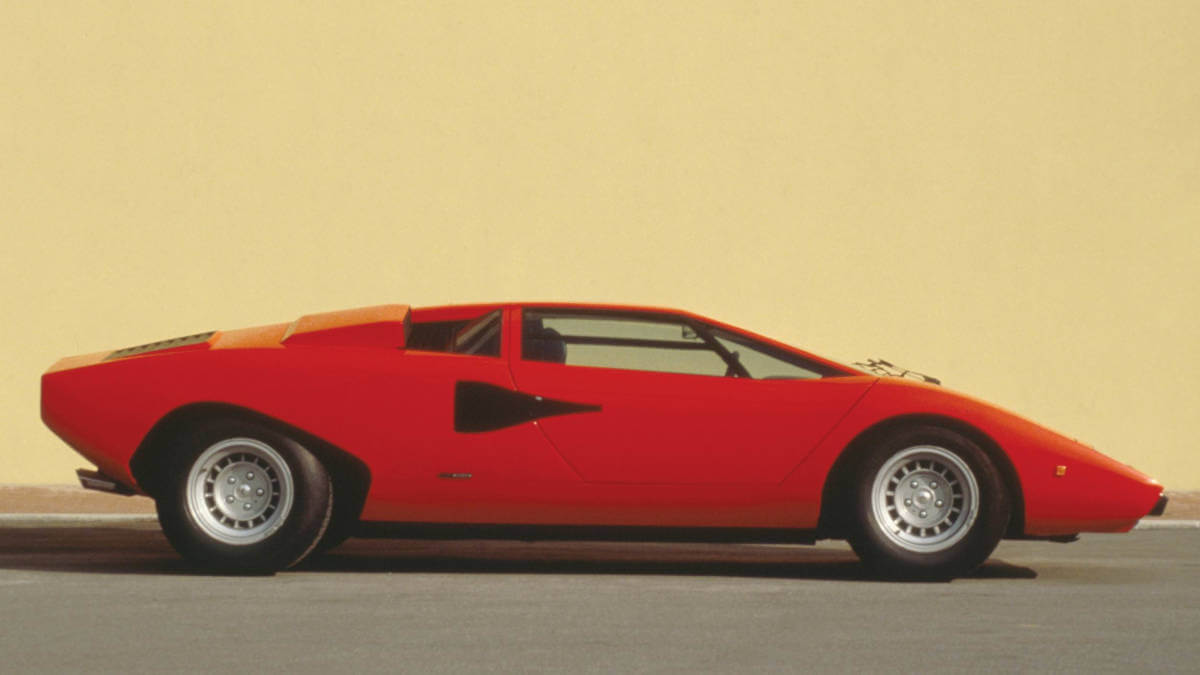



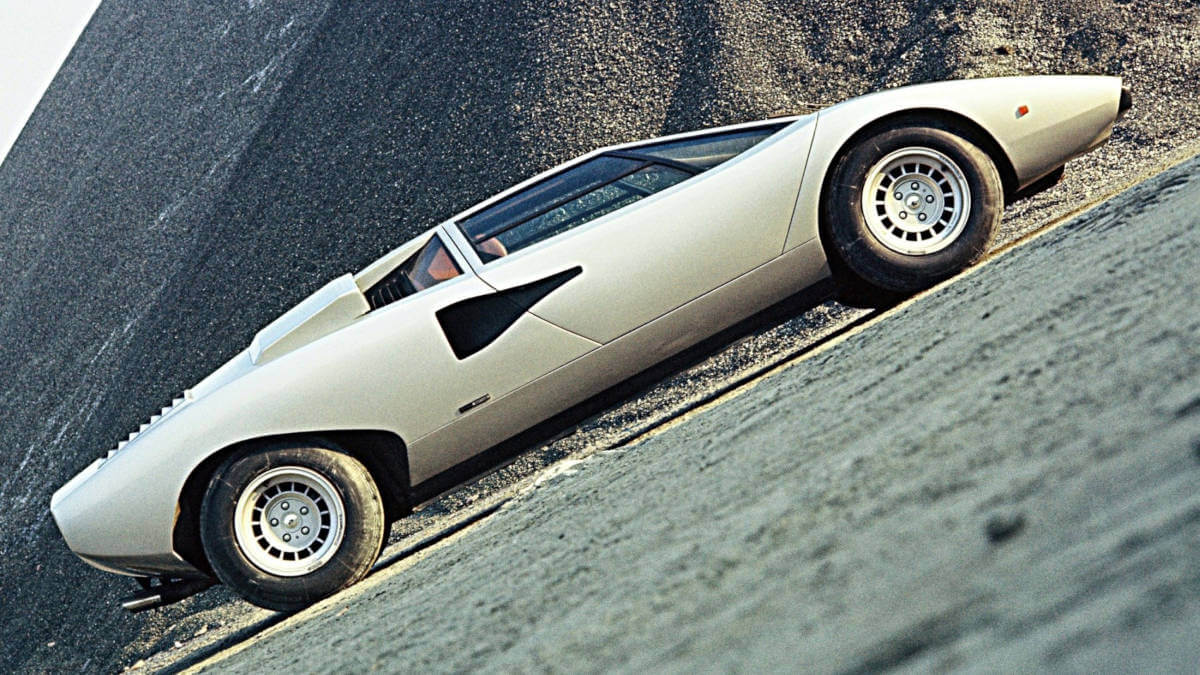



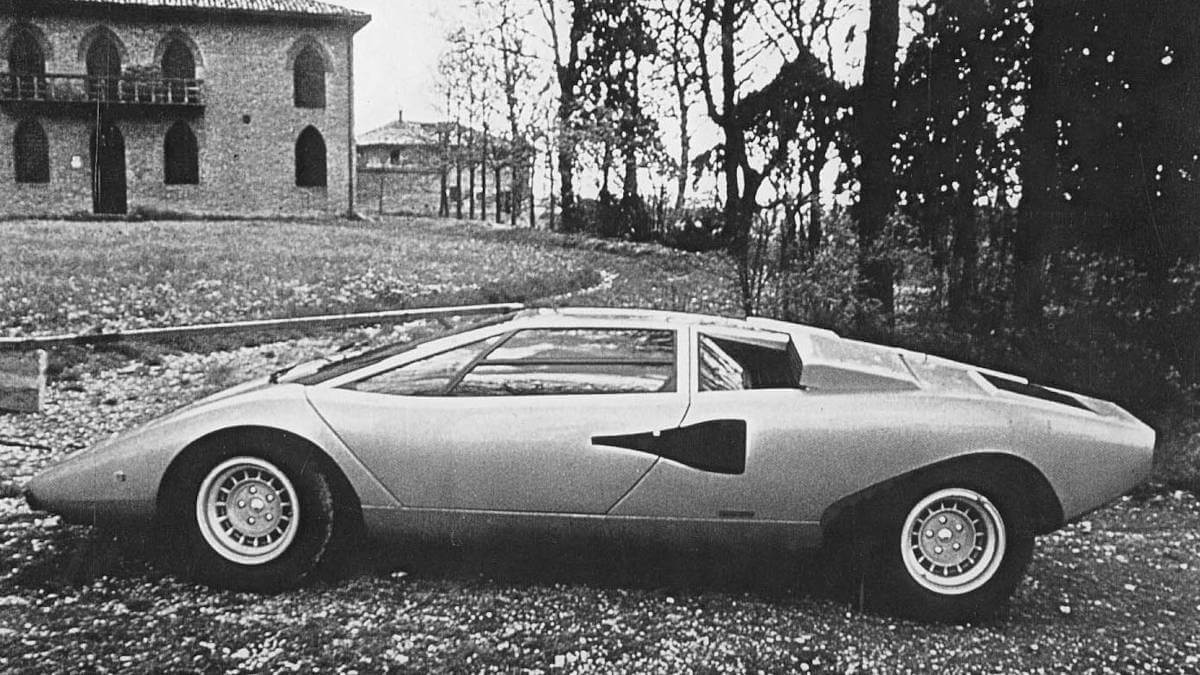



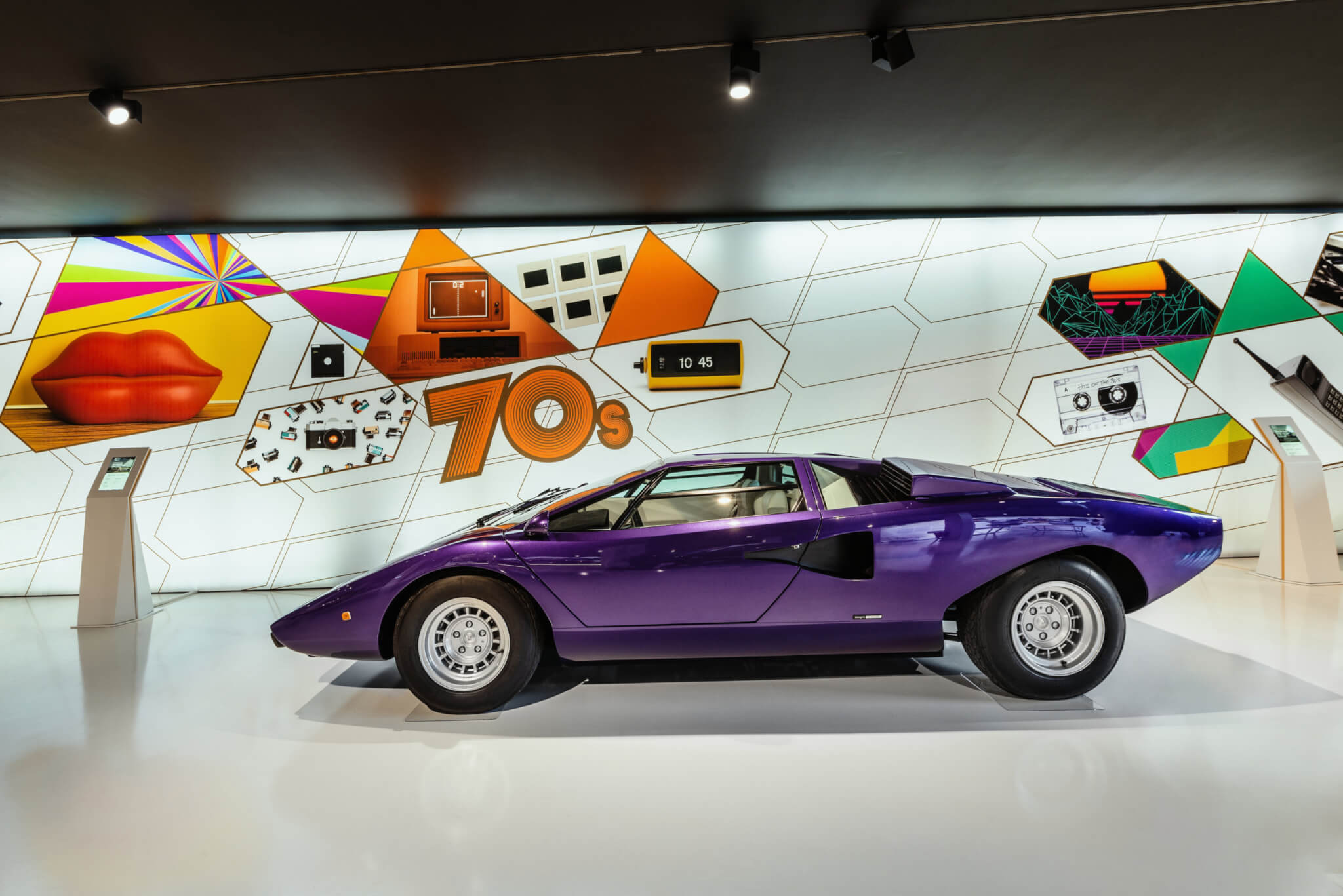



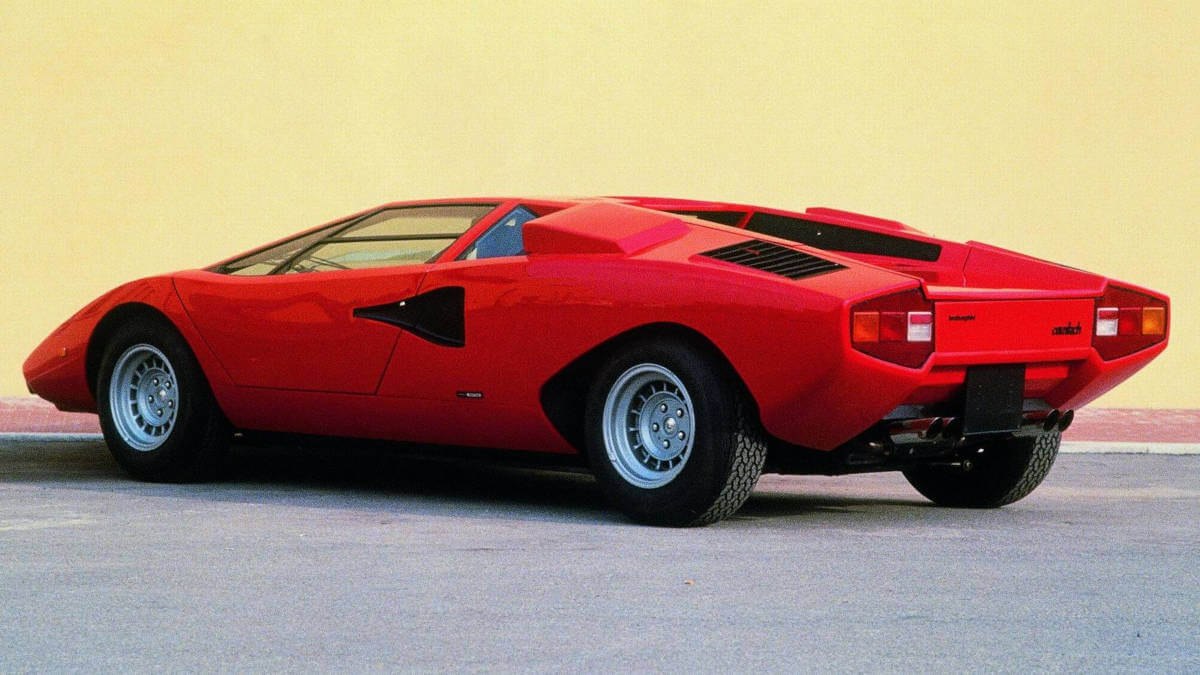



From the LP 400 to the LP 400S
Until the start of production, Lamborghini chief test driver Bob Wallace fine-tuned the sports car through various test drives. Meanwhile, the LP 500 was used for one of the crash tests that were already necessary for certification at the time. On April 11, 1974, the first example of the new Countach LP 400 was handed over to a customer. New compared to the study were NACA air intakes on the sides of the car, smaller door handles and additional side windows with modified air scoops behind them. Above the rear wheels, air outlets ensured that hot engine exhaust air could escape to the outside. The LP 400 remained the fastest Lamborghini road sports car for around ten years. This was party due to stricter exhaust emission regulations from 1978, for which the vehicle was further developed into the Countach LP 400S. The modified exhaust system reduced output to 261 kW/355 hp.
Via the LP 500S to the LP 5000S QV
Even before the modification from the LP 400 to the LP 400S, the successful entrepreneur Walter Wolf had ordered a specially refined Countach from Lamborghini. He received a vehicle with fender extensions and a large rear wing. With very similar optical retouching, the LP 400S went to the dealers from 1978. Wolf’s Countach, however, differed from the series in one more detail: under the hood was a five-liter V12 like the one in the concept car four years earlier. A total of three examples of this special version were built. Meanwhile, Lamborghini built the LP 400S until 1982, when a changeover to the LP 500S with 276 kW/375 hp from 4.7 liters of displacement took place. This was followed in 1985 by the Countach Lp 5000S Quattrovalvole (QV), whose additional designation referred to the four valves per cylinder. The engineers now extracted 335 kW/455 hp from 5.2 liters of displacement. The new cylinder head required more space, which is why a bulge was incorporated on the outside of the engine hood. For the US market, there was an electronic K-Jetronic injection system instead of the carburetors still common in Europe. This resulted in an output of 309 kW/420 hp.
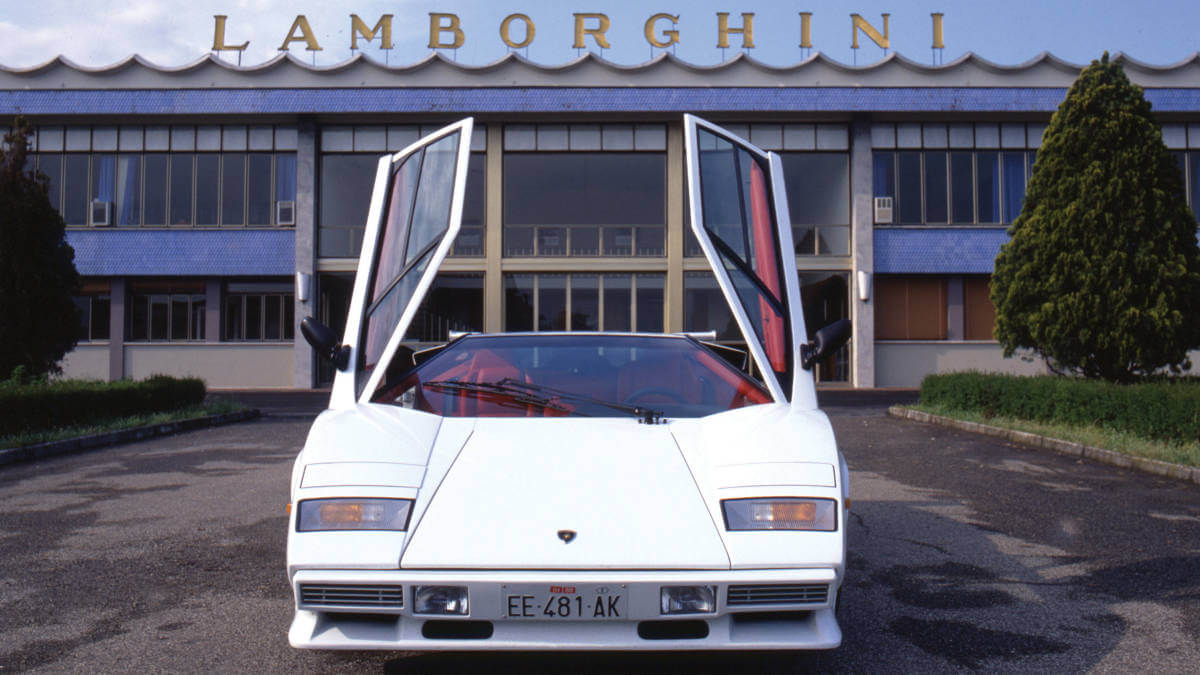



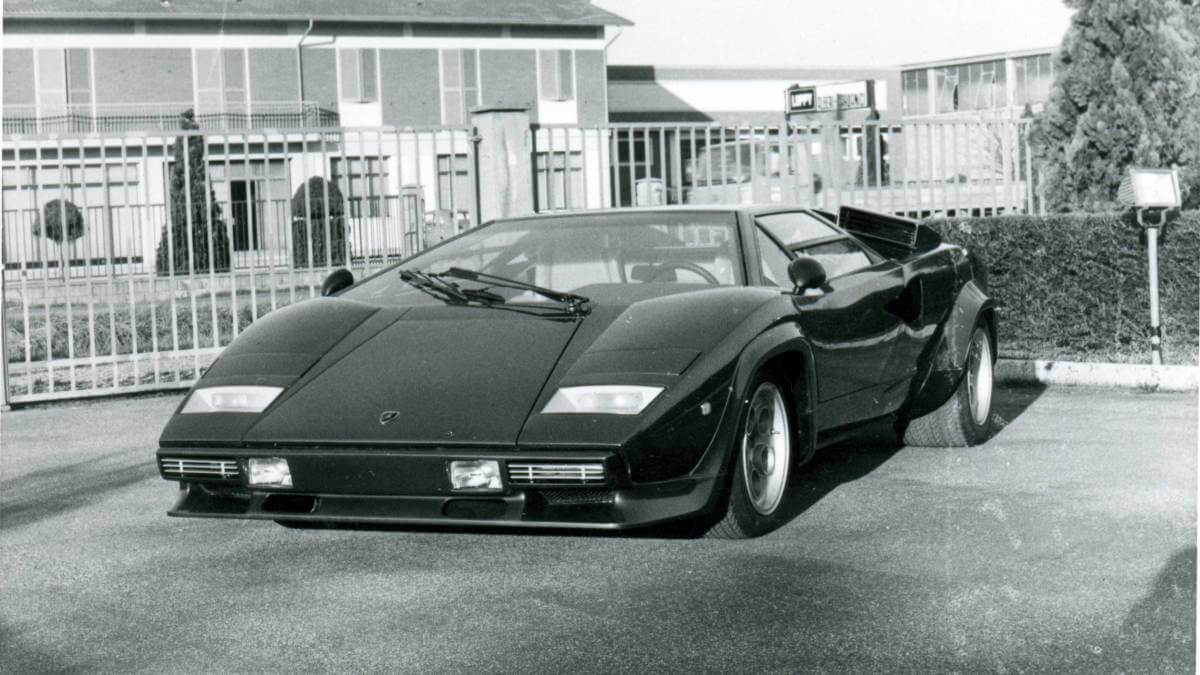



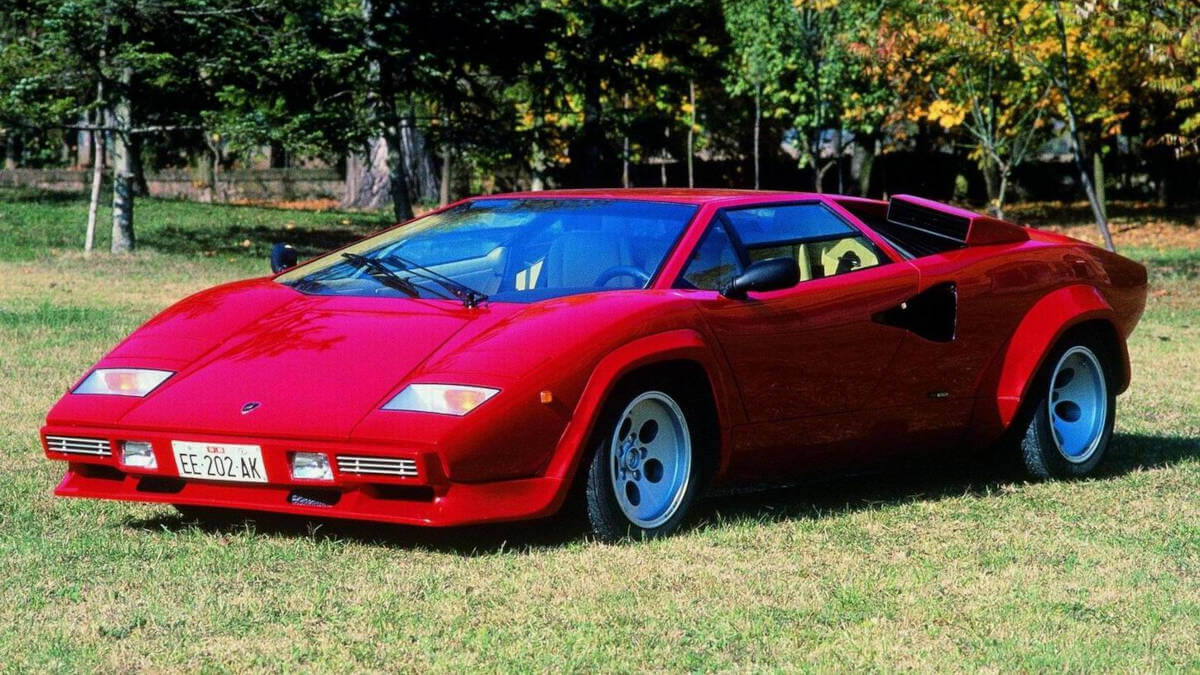



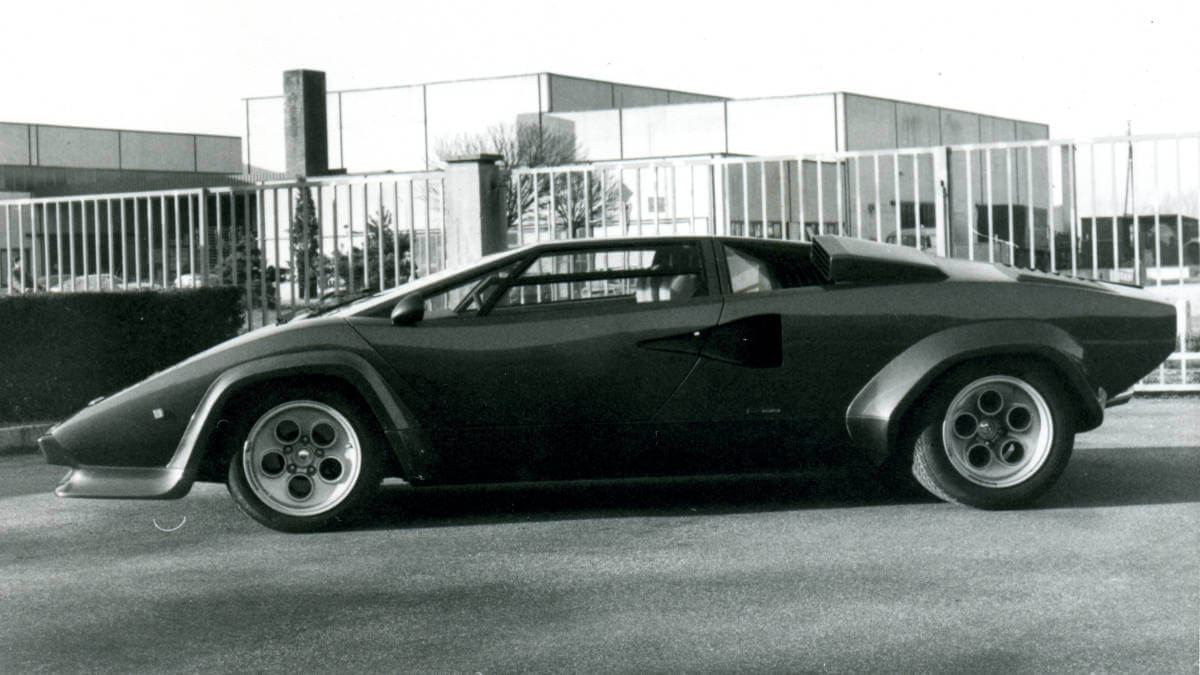



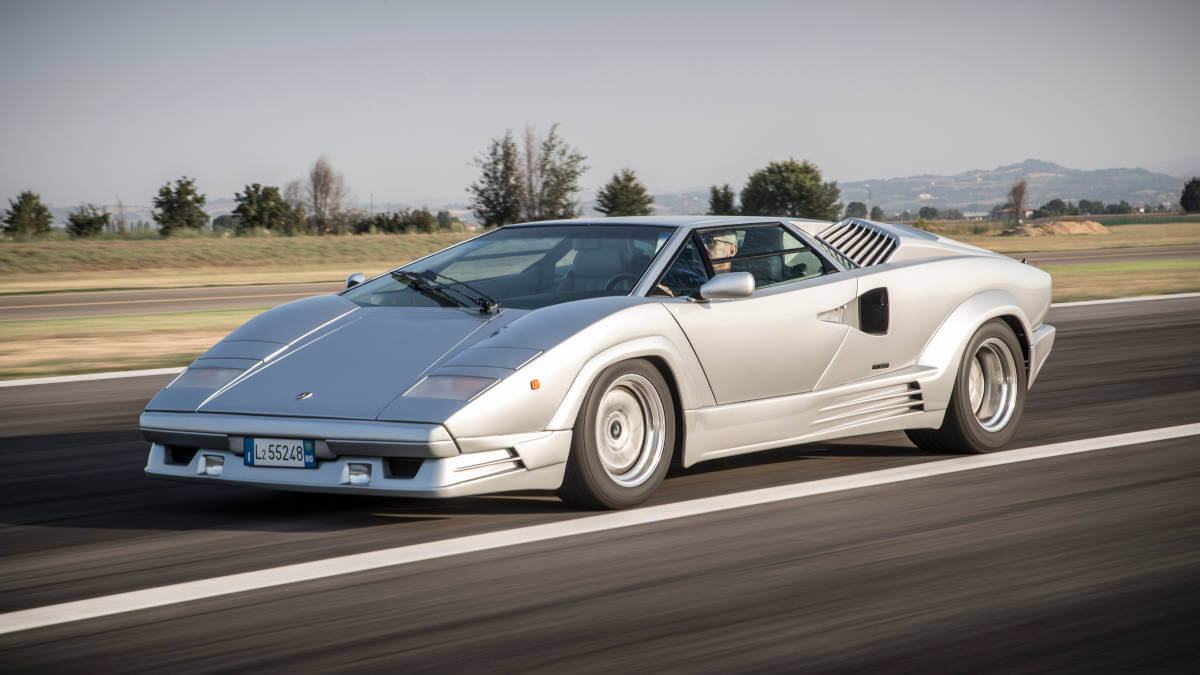



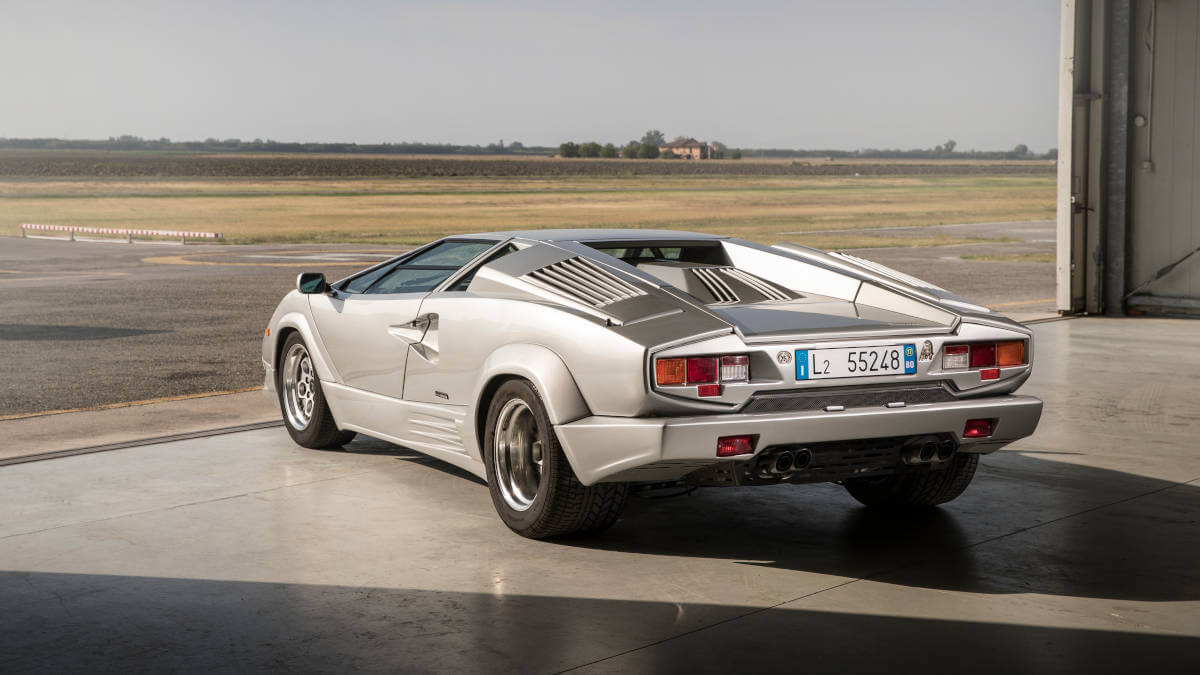



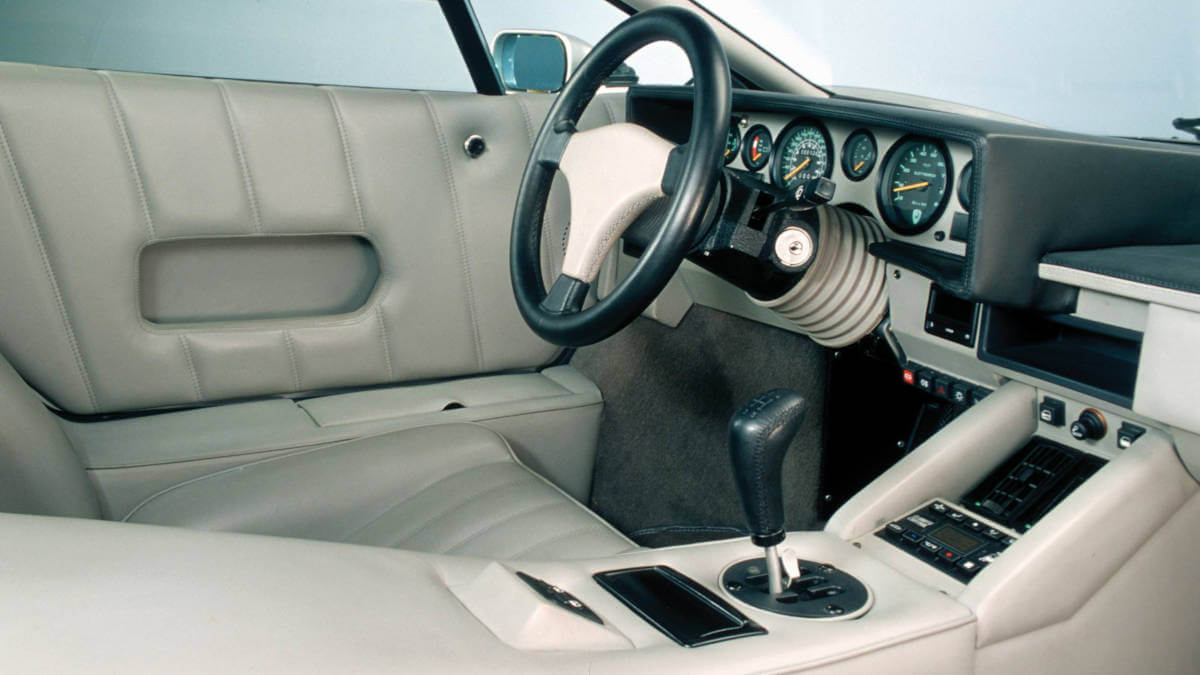



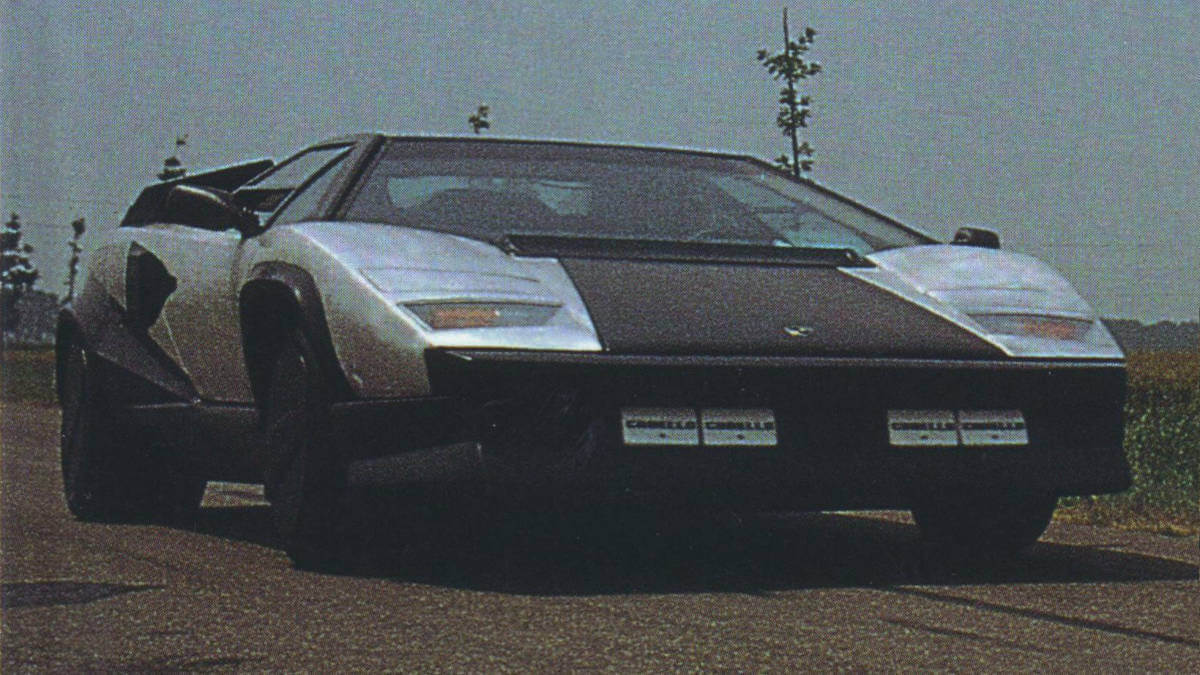



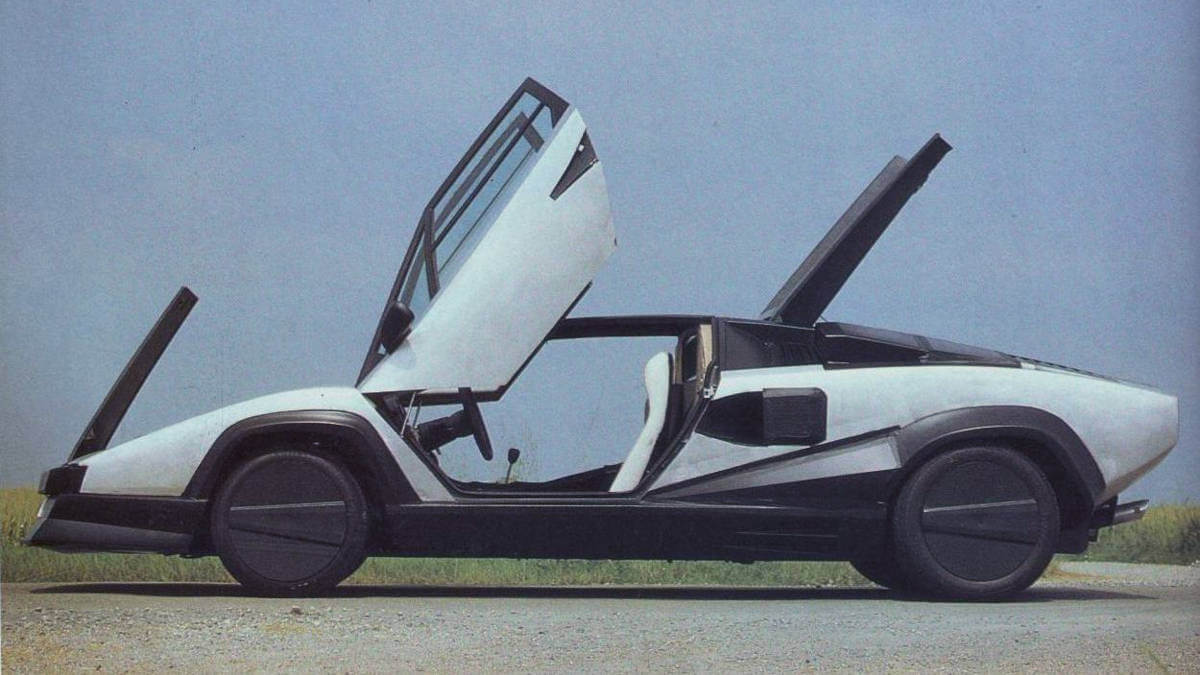



With the Countach 25 Anniversary to the end of production
Just in time for the 25th anniversary of the Lamborghini brand, the Countach 25 Anniversary made its debut in 1988. Visually, this model differed from the previous LP 5000S QV with slat-like grilles in front of the side air intakes, sill extensions and a new front spoiler. Lamborghini made no changes to the engine performance. The Anniversary remained in the range until the Diablo was launched in 1990. Despite a production period of 16 years, only 1,999 examples of the Countach in all five designs, including special requests, were produced ex works. The reason for this was the numerous changes of ownership of the sports car brand and the ever-present financial difficulties in between. As a result, in some years only a few vehicles left the factory, while in others good production figures were achieved.
Especially early Countach are collector cars
Towards the end of 1989, Horacio Pagani (later founder of the sports car brand of the same name) developed the Countach Evoluzione with carbon fiber bodywork. This not only provided improved aerodynamics, but also reduced the kerb weight to 980 kilograms. With 360 kW/490 hp, this variant achieved topspeeds of up to 330 kph (205 mph). It was never put into production. Today, the early ‘Periscopio’ models in particular fetch high prices at sales and auctions. The other variants are in the slipstream behind. Special previous owners or stories are, as with all sports cars, value-enhancing. However, the Countach is also considered a real macho car, as few cars have power steering, the clutch pedal is hard as concrete, and the air conditioning is undersized. The best way to reverse park is to sit on the sill with the driver’s door open, since you can’t see anything through the rear window anyway.
Images: Lamborghini




